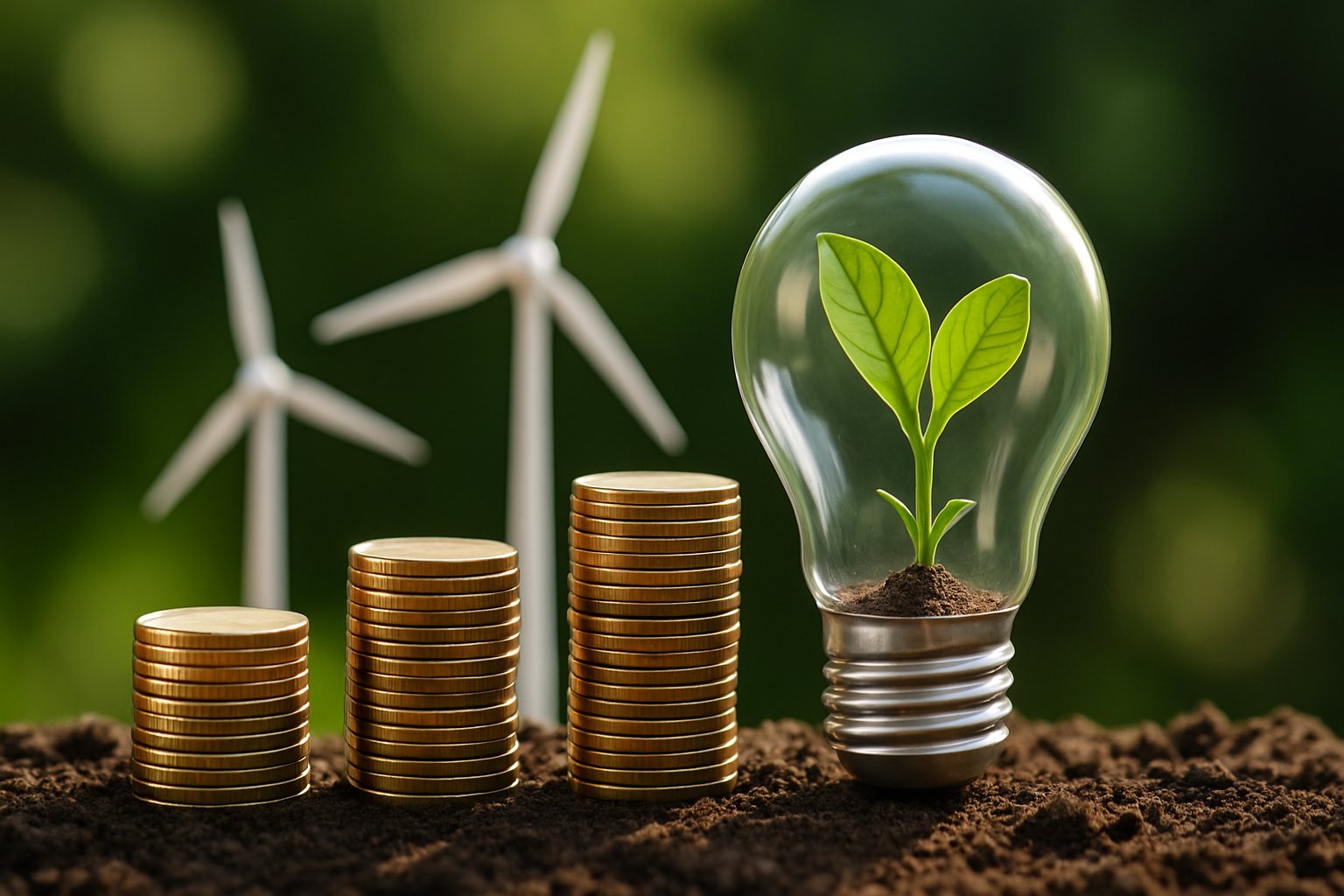Introduction: A New Era of Conscious Capitalism
The Rise of Green Investing: Profiting While Saving the Planet. Over the past decade, a quiet revolution has been reshaping the financial world. Investors — both retail and institutional — are increasingly aligning their portfolios with their values. The result? A booming interest in green investing, or sustainable investing, where profits and purpose are no longer mutually exclusive.
With wildfires, rising sea levels, and climate-related disasters making headlines globally, there’s a growing realization that the planet’s health is inextricably linked to our economic future. But green investing isn’t just about being ethical — it’s proving to be smart business too.
Table of Contents
What is Green Investing?
Green investing, often referred to as ESG (Environmental, Social, and Governance) investing, focuses on companies that are environmentally responsible, socially aware, and governed transparently. Investors assess not only financial returns but also a company’s ecological footprint, labor practices, and ethical standards.
This could mean backing:
- Renewable energy firms (like solar or wind)
- Companies reducing carbon emissions
- Businesses with fair trade or sustainable supply chains
Unlike traditional investing which focuses solely on financial gains, green investing measures impact alongside profit.
Why Is Green Investing on the Rise?
1. Climate Change Is a Financial Risk
Global investors now realize that climate change poses material risks. Think of rising insurance claims due to floods, disrupted supply chains from extreme weather, or government regulations around emissions. These risks directly affect a company’s bottom line.
In fact, BlackRock, the world’s largest asset manager, made headlines in 2020 when CEO Larry Fink stated:
“Climate risk is investment risk.”
(Source: BlackRock Annual Letter, 2020)
That declaration sent ripples across Wall Street — and legitimized green investing as a strategy, not a trend.
2. Government Policies Are Fueling It
Worldwide, governments are pushing green agendas. In the U.S., the Inflation Reduction Act allocates over $370 billion to clean energy initiatives. Meanwhile, the European Union’s Green Deal targets net-zero emissions by 2050.
Subsidies, tax credits, and strict emissions targets mean companies involved in sustainability are better positioned to grow. For investors, this opens new avenues for early entry into industries of the future.
3. Consumer Demand Has Shifted
Modern consumers — especially Gen Z and millennials — are demanding eco-consciousness from brands. Whether it’s ditching plastic packaging or sourcing sustainable cotton, companies that ignore sustainability risk losing customers.
Investors know this. A green company often means a resilient brand, loyal customers, and long-term profitability.
Can You Really Profit from Green Investing?
Absolutely. Let’s bust the myth that sustainable investing means compromising returns.
According to a 2022 Morningstar report, sustainable funds performed as well or better than traditional funds over a 10-year period. Clean energy ETFs like ICLN (iShares Global Clean Energy) or TAN (Invesco Solar ETF) have delivered impressive gains during green energy booms.
But green investing is not about short-term trading. It’s about long-term value creation — where environmental performance strengthens a company’s fundamentals.
Here’s a real-world example:
- Tesla, once considered a niche electric car startup, is now one of the world’s most valuable companies. Investors who saw its potential early — not just as a car company but a sustainability tech company — reaped massive returns.
(See real-time ESG fund performance comparisons at: Morningstar ESG Investing)
Types of Green Investment Opportunities
1. Green Bonds
Governments and corporations issue green bonds specifically to fund eco-friendly projects. Whether it’s building solar farms or improving water infrastructure, these bonds ensure your capital directly supports sustainability efforts.
2. Sustainable Mutual Funds & ETFs
These funds screen companies based on ESG scores. Popular examples include:
- Vanguard FTSE Social Index Fund
- iShares MSCI KLD 400 Social ETF
They’re perfect for passive investors looking to diversify across green leaders.
3. Direct Equity Investment
If you’re a hands-on investor, you can buy stock in individual companies known for their environmental focus. Think solar panel manufacturers, EV makers, or green construction firms.
Just be sure to research thoroughly — not all “green” claims are genuine.
Beware of Greenwashing
One of the biggest risks in green investing is greenwashing — where companies exaggerate or fabricate their environmental efforts to appear sustainable.
As a smart investor:
- Scrutinize ESG reports
- Use independent ESG rating platforms like Sustainalytics or MSCI ESG Ratings
- Follow credible financial journalists or sustainability watchdogs
Remember, authenticity matters. It’s not just about what a company says, but what it does.
Tips for New Green Investors
- Start small. Don’t go all-in. Allocate a portion of your portfolio to ESG options first.
- Stay informed. Read ESG-focused newsletters or listen to green investing podcasts.
- Use robo-advisors. Some platforms (like Betterment or Wealthsimple) let you choose ESG-focused portfolios.
Also, follow global news. Green investing is tied to international events — from UN climate summits to oil prices to technological breakthroughs in hydrogen or battery storage.
Conclusion: Investing in a Greener Tomorrow
Green investing isn’t a fleeting trend. It’s the future of finance — where ethics and economics intersect. The beauty lies in the dual impact: you not only grow your wealth but also contribute to a more sustainable world.
As awareness grows and regulations tighten, ESG-conscious companies will likely become the norm rather than the exception. And those who invest early in this transition may find themselves ahead — not just in returns, but in responsibility.
So, whether you’re a seasoned investor or a curious beginner, now might be the right time to ask:
“Is my money working for me — and for the planet?”
Interested in exploring more sustainable finance trends? Check out ESG Clarity for the latest news and market analysis.
Find more Finance content at:
https://allinsightlab.com/category/finance/

